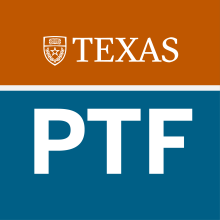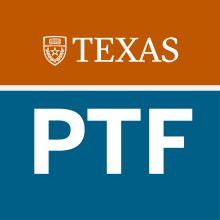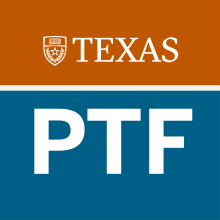Individual Fellow Initiatives

Inclusive STEM Communication for Engineering Students
The challenges facing modern engineers are more complex than ever. Current engineering issues such as
algorithmic bias, data security and privacy, and sustainability do not only require technically skilled engineers,
but also engineers who are conscious about structural inequities and biases.

The “Social/Wellness Module:” Providing Space for Wellbeing and Social Learning for Incoming UT Students
My project addresses the lack of built-in social/wellness-oriented interactions in introductory courses for

Engineering Sentences: A Cross-Disciplinary Training Program
Although Cockrell School of Engineering (CSE) undergraduates take a required engineering writing class, which I teach for Chemical Engineering, they typically struggle with writing laboratory and long-form research reports. Helping CSE students to overcome this obstacle matters because writing technical reports prepares engineering students for the writing-intensive work of a professional engineer. Faculty teaching these classes would also benefit from higher quality student work.

Watering Two Plants With One Hose: Protocolization of Progress to Promote Practical Resource Sharing
When I first became faculty at UT Austin, I inherited an existing course; for a variety of reasons, I felt the need to overhaul all of the lectures. This process, however, proved time-consuming and I found myself unable to complete all of the lectures as originally planned prior to the start of the semester. Moreover, even the lectures that I did overhaul continued to have flaws and I was growing increasingly frustrated with the continued inadequacy of my lessons, despite devoting considerable time and energy to them. This was disheartening and my other responsibilities (e.g.

Building Information Modeling (BIM) as a Proxy for Project-Based Learning Integration across the Architectural Engineering Undergraduate Curriculum
The University of Texas at Austin’s Civil, Architectural and Environmental Engineering (CAEE) department has taken several steps towards improving the preparation of Architectural Engineering students with respect to modern engineering tools, including the computing tools commonly used in engineering practice.

Addressing Population Health through Interprofessional Community Engagement
Pharmacists are an integral member of the health care team, trained to provide care based on evidence. However, the nationwide call-to-action to transform the delivery of care requires a cultural shift in educating students in health professions programs. The rapidly evolving health ecosystem mandates practitioners to work collaboratively in teams to provide person-centered and population oriented care.

Data Analysis Tools: Integrating Computational and Statistical Techniques in the Environmental Engineering Curriculum
The goal of this project is to train the next generation of environmental engineers in computing and statistical techniques to solve big data problems. Current undergraduate students in the Department of Civil, Architectural and Environmental Engineering have little to no exposure to computational and statistical methods for data analysis (e.g., big data collected from sensor networks). I proposed to integrate computational techniques in several courses throughout the Environmental Engineering Degree.

Curriculum Integration Through a 4-year Design Project and Cross-course Educational Tools
In many curricula students find it difficult to understand the common thread and themes between their courses until near graduation (or ever). Thus, students are unable to benefit from the synergistic nature of a fully integrated program. Courses are taught by different instructors with different teaching styles and nomenclature (a potentially good thing), but all too often even the instructors are unaware of the material or educational objectives taught in complementary courses.

Collaborative Effort–Teaching General Physics
I have been teaching general physics for non-Physics majors since 2008. I have implemented interactive learning elements into my lecture and “real life” questions, which allows the students to have short (3-4 minutes) discussion in small groups to find solutions for the given questions. I have seen improvement in student engagement and finally in test scores, especially within the semester as the students embrace this style of teaching. However, in order to really affect improvement, I communicate with other physics faculty to reflect on the evaluation of successful teaching.

A Sustainable Way to Teach Data Mining and Mapping: Proof of Concept For a Flipped Computational Skill Instruction Module
This project is directed at students with no prior knowledge of computer programming languages. When introducing complex and new skills such as computer programming in a classroom, teachers are often confronted with a lot of worried students and great numbers of very different questions, especially in humanities departments. The lecture setting is not well suited to address the needs of individual students.

CREEES Fusion Room: an Interdisciplinary Digital Workshop
This project entailed the creation of a curricular context and physical space for collaborative interdisciplinary teaching and research for faculty and students interested in Russian, East European and Eurasian studies. This was achieved in two ways. First, I transformed the required gateway course to our major, “Introduction to Russian, East European and Eurasian Studies,” which had been a disjointed “parade of faculty” course with disconnected guest speakers.

Clinical Advancement in Simulated Environments
Among the communication disorders considered to be fundamental to the scope of practice for speech-language pathologists, stuttering or what is also commonly referred to as a fluency disorder has historically been and continues to be the disorder for which most speech-language pathologists report minimal to no clinical or academic exposure and/or competency.

